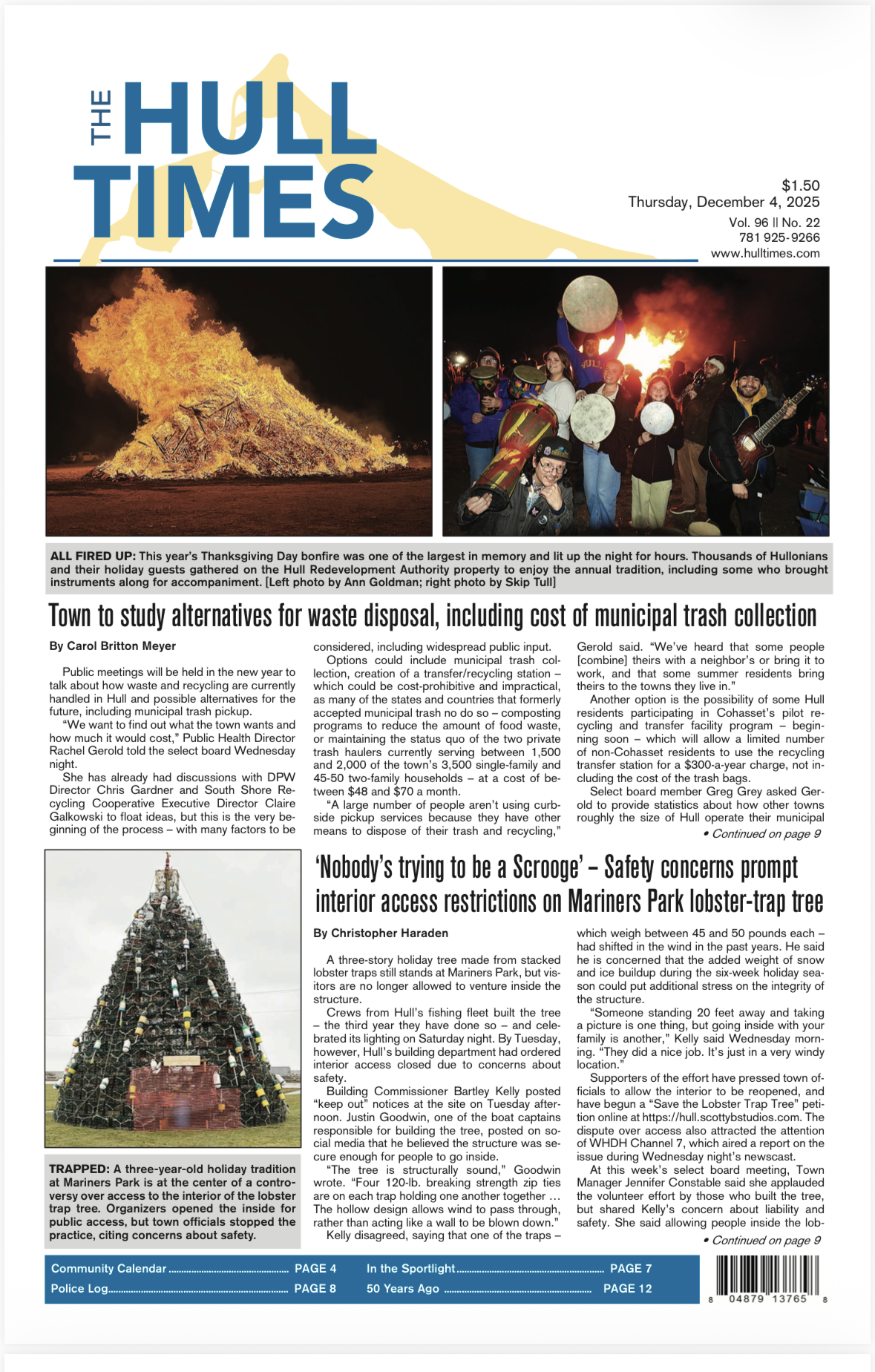HRA promoting two-way road plan to improve safety, ease traffic bottlenecks
/By Dolores Sauca Lorusso
Regardless of what happens with proposals to develop the Hull Redevelopment Authority’s property, the board is moving ahead with plans to reconfigure the traffic flow by creating narrower, two-way roads along the HRA land and in the Surfside business district.
The traffic plan is similar to the road pattern that existed in the area before the HRA property was consolidated in the 1970s.
“The two-way road is important regardless of what happens with the HRA” Chris DiIorio, director of community development and planning, said at a recent meeting of the authority.
Kevin Dandrade, principal at TEC incorporated, who has been working with the town and the HRA since 2015, summarized the benefits of the two-way road: It improves the safety and quality of pedestrian spaces, allows for the “right-sizing” of Nantasket Avenue, eliminates current traffic bottlenecks, improves access for businesses and emergency services, and the transfer of surplus land to HRA will allow new road design to activate pedestrian space and knit together Surfside and Kenberma.”
Longtime HRA member Bartley Kelly, who also is the town’s building commissioner, said there are “three stakeholders” that own affected property: the town, HRA, and the state Department of Conservation and Recreation.
“All three have to sign on to this improvement, and it is an improvement,” he said.
The transfer of land from the town to the HRA is not “simply a transfer,” said Kelly, adding the HRA will compensate the town “based on current land values.”
“There will be an HRA property transfer to the town for Edgewater extension, so the transfer goes both directions,” DiIorio said.
According to Kelly and DiIorio, the DCR has not been “responsive” regarding the two-way road plan proposal.
“Hopefully the lack of engagement will change with the new commissioner,” said Kelly.
DiIorio believes the DCR will eventually “get on board with” the changes because the agency will see the benefits.
“Perhaps a better strategy to get a response from the DCR regarding the proposed two-way road plan would be to incorporate those goals in the two-way road plan,” said Patrick Finn of Telegraph Ave.
According to Finn, state Sen. Patrick O’Connor presented a letter from the DCR to the select board this spring that “clearly stated the intent of the DCR to implement the goals of their master plan.”
Finn would like everyone to work together to pursue “fully funding the DCR Master Plan, along with the two-way road plan” to ensure the goals of both plans are incorporated in the HRA’s draft plan.
“The DCR mission is recreation, the HRA mission is development that produces tax revenues,” he said. “Let the DCR build their public boardwalk, rather than the HRA precluding the possibility of a widened pedestrian boardwalk with shade structures, benches, and a raised two-way bike lane.”
HRA member Adrienne Paquin agreed the situation for bikers could be improved in the plan, saying the current plan for bikers “does not make sense to her.”
Safety has also been identified as a key concern in the decision to implement the two-way road plan. According Kelly, over the last three months there have been two rollover accidents on Hull Shore Drive, as well as some “near misses” with drivers going the wrong way on the road.
The current road allows people to pass, creating a “multi-lane threat,” while two-way traffic offers “safer crossing for pedestrians with single lane controls and better cross ]walk areas,” said Dandrade. “The signal at Edgewater extension offers the ability to control traffic with a signal for multiple purposes.”
Sue Vermilya, a founding member of SOS, Save Our Space, inquired about cost and the expected duration of construction.
Dandrade said the street reconfiguration will cost approximately $8 million. “Always flexible with how things go with construction…can specify that the bulk of the work be done in the shoulder season so no to tie up traffic in the busy season,” he said.
“It is going to cost a lot of money…funding is the biggest hurdle; MassWorks looks at economic development for any money,” said DiIorio. He said this a town project; therefore, the town is “exploring all other available sources of funding.”
MassWorks funded the preliminary work, while the initial 25% design was funded by the HRA.
Paquin expressed a desire to “decouple” the two-way road plan from the HRA Urban Renewal Plan discussions, rather than “linking them completely together so there is no flexibility at all.”
According to Dandrade, the reconfiguration received select board endorsement and town meeting approval in 2018 and has “utility” all by itself, but is “beneficial to the redevelopment of the HRA property.”
“The whole town benefits from the two-way road system,” Kelly said.












